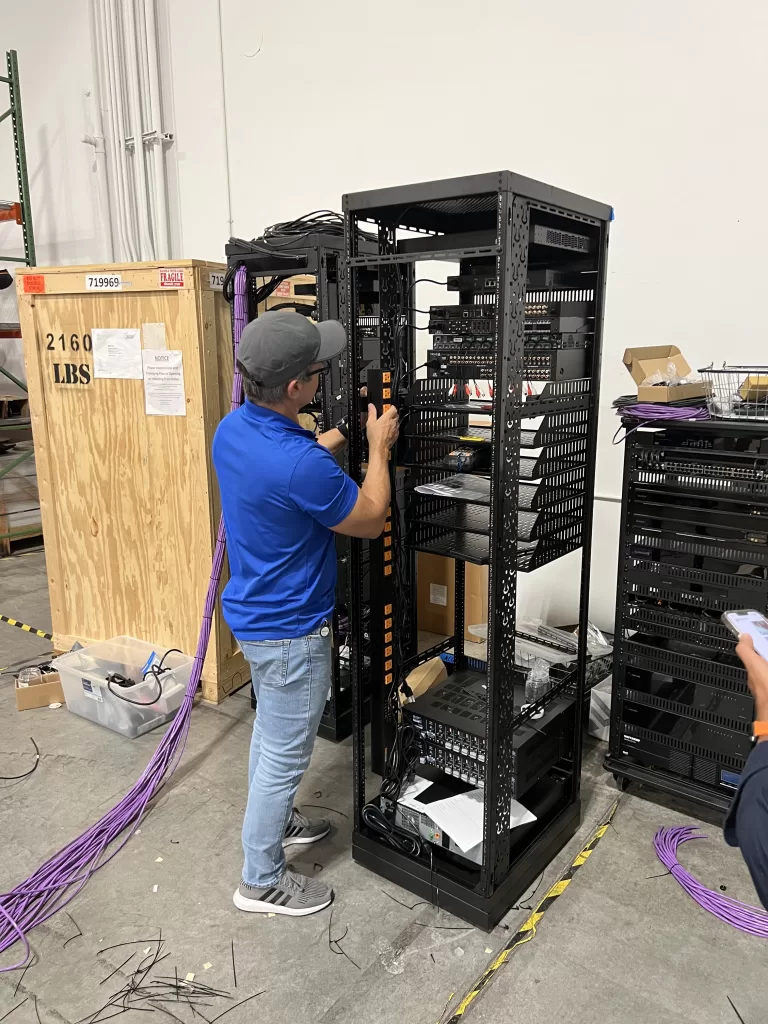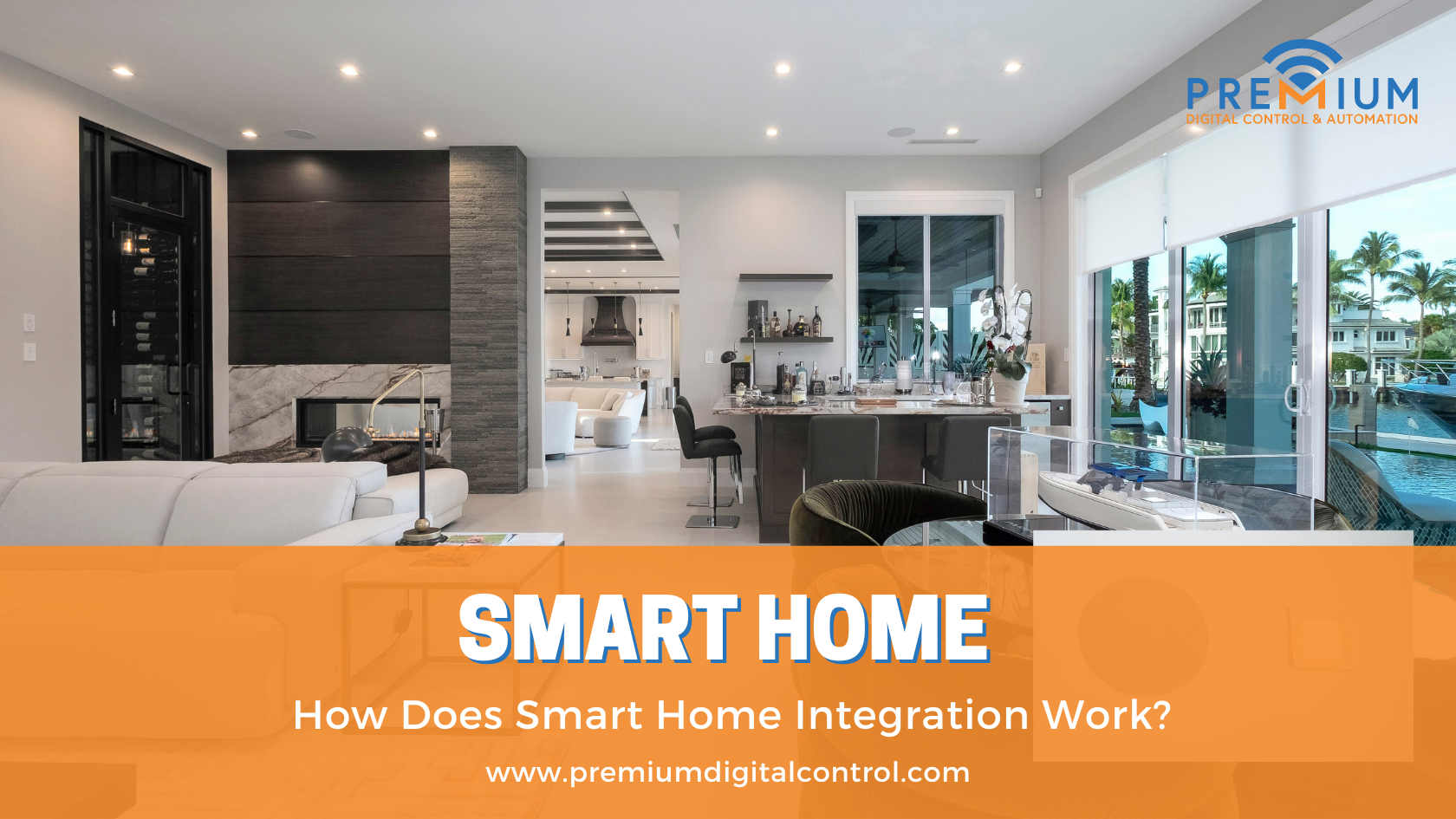Imagine a world where your living space anticipates your needs, where lights turn on and off at your command, where you can secure your home with a simple touch, and where your favorite music greets you in every room. This is the power of smart home integration, a transformative concept that harmonizes diverse technologies and brands to create an intelligent and interconnected living environment.
In this blog, we embark on a captivating journey to unravel the secrets behind smart home integration. From planning and design to programming and installation, we’ll delve into the intricate process that brings your dream of a smart home to life. So, fasten your seatbelt and get ready to explore the inner workings of this cutting-edge technology that is revolutionizing the way we interact with our homes.
What is a Smart Home?
A smart home is a living space that incorporates advanced technology to enhance its functionality and connectivity. It goes beyond traditional homes by integrating various smart devices and systems that can be controlled remotely or automated to perform tasks effortlessly. These devices can include smart thermostats, lighting systems, security cameras, door locks, entertainment systems, and more.
The key feature of a smart home is the ability to connect these devices through a central hub or a network, allowing for seamless communication and control. With the convenience of voice commands or smartphone apps, homeowners can easily manage and monitor their home’s various aspects, creating a personalized and intelligent living environment. The ultimate goal of a smart home is to simplify everyday tasks, increase energy efficiency, and provide a higher level of comfort and security for its occupants
Learn more about what smart home automation is.
Smart Home Integration Process
Picture yourself at the center of a world where your home anticipates your arrival, understands your preferences, and adapts to your needs. This is no longer a distant dream but a reality made possible by the seamless integration of smart home brands. By harnessing the power of renowned names like Control4, Crestron, Ketra, Lutron, and Savant, a team of expert smart home integrators creates a symphony of interconnected devices that work in perfect harmony.
But how does it all come together? How do these brands seamlessly communicate and collaborate to provide you with an unparalleled living experience?
Assess Requirements
The first step in smart home integration is to assess the specific requirements and preferences of the homeowner. This involves understanding the desired functionalities, devices, and systems that they want to incorporate into their smart home. A team of experts, including architects, interior designers, contractors, and electricians, work together to understand your requirements and create a comprehensive plan. Floor plans and elevation drawings are carefully reviewed, taking into account the existing infrastructure and future scalability. This stage ensures that all the nitty-gritty details are considered, enabling the seamless integration of smart devices into your home. This assessment helps determine the compatibility of different smart home brands and enables the selection of appropriate devices and technologies.

Research and Selection
The process of smart home integration involves an in-depth analysis of various smart home brands available in the market. Once the homeowner’s requirements and preferences are understood, the integration team embarks on a comprehensive research phase to identify the most suitable brands for the project. This step is crucial to ensure that the selected brands align with the homeowner’s needs and provide the desired functionalities.
During the research phase, the integration team evaluates multiple factors to determine the compatibility, reliability, and scalability of different smart home brands. Let’s take a closer look at the key considerations during this process:
Features and Functionalities
One of the primary factors the integration team explores is the range of features and functionalities offered by each smart home brand. They examine whether the brands provide the specific capabilities required to fulfill the homeowner’s needs. This may include aspects such as lighting control, climate management, security systems, audio/video distribution, voice control, and more. By comparing the features of different brands, the team can identify the ones that offer the most comprehensive and tailored solutions.
Compatibility and Integration
Seamless integration of various smart home devices is a critical aspect of a successful smart home ecosystem. The integration team thoroughly investigates the compatibility of different brands, assessing their ability to work together harmoniously. They consider the communication protocols, standards, and interfaces supported by each brand, ensuring that they can easily integrate and communicate with one another. This compatibility ensures that all devices can be controlled and managed from a central hub or control system.
Reliability and Performance
Reliability is paramount when it comes to smart home technology. The integration team examines the reputation and track record of each brand to ensure that they offer reliable and high-performance products. They consider factors such as product quality, durability, and customer reviews to gauge the overall reliability of the brand’s devices. By selecting reputable and dependable brands, the team can build a smart home system that operates seamlessly and consistently.
Scalability and Future-proofing
Smart home integration is an investment for the future, and it’s crucial to consider the scalability of the chosen brands. The integration team assesses whether the brands offer a wide range of devices and systems that can be expanded and integrated in the future. This ensures that as the homeowner’s needs evolve or new technologies emerge, the smart home system can be easily upgraded and expanded without requiring a complete overhaul.
User Experience and Support
The integration team also takes into account the user experience provided by each brand. They consider factors such as user interfaces, mobile apps, and ease of use to ensure that homeowners can effortlessly interact with their smart home system. Additionally, they assess the quality of customer support and available resources provided by the brands, ensuring that homeowners can rely on prompt assistance and ongoing support if needed.
System Design
Once the smart home brands have been selected, the integration team moves on to the crucial phase of system design. This phase involves creating a comprehensive and cohesive system architecture that outlines how the various devices will work together to create a seamless and integrated smart home experience. Let’s dive deeper into the intricacies of system design:
Central Control Hub
At the heart of every smart home system lies the central control hub, which serves as the command center for managing and controlling all connected devices. The integration team carefully identifies and selects the most suitable central control hub based on the homeowner’s requirements and the compatibility with the chosen smart home brands. This central hub acts as a centralized interface through which the homeowner can interact with and control all the integrated devices.

Connectivity Protocols
A key aspect of system design is determining the appropriate connectivity protocols for communication between devices. The integration team considers various options such as Wi-Fi, Z-Wave, Zigbee, and others, based on the compatibility of the smart home brands and the specific requirements of the project. Each protocol has its own strengths and limitations, and the team evaluates factors like range, reliability, data transfer speed, and power consumption to select the most suitable protocol(s) for the smart home ecosystem.
Integration Points
One of the primary goals of system design is to identify the integration points between different devices and systems within the smart home. The integration team carefully maps out how each device will interact and communicate with others to ensure seamless operation. This includes establishing connections between lighting systems, climate control devices, security systems, entertainment systems, and more. Integration points are identified to enable coordinated actions and automation, allowing the homeowner to control multiple devices simultaneously or trigger certain events based on specific conditions.
Device Integration
The next step is to integrate the selected smart home brands into the overall system. This involves configuring and connecting the devices to the central hub or control system. The integration team ensures that all devices are properly recognized, and their functionalities are synchronized for efficient operation. They may use manufacturer-provided APIs or software development kits (SDKs) to establish communication between devices from different brands.
This can include these steps:
Device Configuration
The integration team starts by configuring each individual smart home device according to its specific requirements. This involves setting up the device’s network connectivity, assigning unique identifiers, and configuring any necessary settings or preferences. The team ensures that the devices are properly recognized within the system and can communicate effectively with the central hub.
Connection to the Central Hub

Once the devices are configured, they are connected to the central hub or control system. This connection is established using the appropriate connectivity protocols identified during the system design phase, such as Wi-Fi, Z-Wave, Zigbee, or others. The integration team ensures that the devices can communicate with the central hub seamlessly and reliably.
Recognition and Synchronization
The integration team ensures that all integrated devices are properly recognized by the central hub or control system. This recognition allows the central hub to identify and control each device individually. Additionally, the team synchronizes the functionalities and settings of the devices to ensure efficient and cohesive operation. This synchronization enables the devices to work together in harmony and respond to commands and automation routines.
Cross-Brand Communication
One of the challenges in device integration is enabling communication between devices from different smart home brands. The integration team utilizes various methods to establish this cross-brand communication. They may utilize manufacturer-provided APIs (Application Programming Interfaces) or SDKs to enable interoperability between devices. These APIs and SDKs facilitate seamless communication and integration between devices, regardless of the brand they belong to.
Testing and Troubleshooting
After the initial integration, the team conducts thorough testing to ensure the proper functioning of all integrated devices. They verify that the devices respond correctly to commands from the central hub, perform automation routines as expected, and maintain consistent connectivity. Any issues or conflicts that arise during the testing phase are promptly addressed and resolved by the integration team to ensure a smooth and reliable operation.
Expansion and Upgrades
Device integration also takes into account the future expansion and potential upgrades of the smart home system. The integration team designs the integration process to be scalable, allowing for the addition of new devices or the replacement of existing ones without disrupting the overall system. This scalability ensures that the smart home system can evolve and grow alongside the homeowner’s changing needs and technological advancements.
Programming and Automation
Once the devices are integrated, the integration team proceeds to program the smart home system based on the homeowner’s preferences. This involves setting up automation routines, creating scenes, and establishing rules to automate various tasks.
Understanding Homeowner Preferences
The integration team works closely with the homeowner to gain a thorough understanding of their preferences and requirements. They gather information about the homeowner’s daily routines, lifestyle patterns, and desired automation scenarios. This information serves as the foundation for the programming phase, ensuring that the smart home system is tailored to the homeowner’s specific needs.
Setting Up Automation Routines
One of the key aspects of programming is creating automation routines. These routines enable the system to perform tasks automatically based on specific triggers or schedules. For example, the integration team can program the system to turn off lights, adjust thermostat settings, and activate security cameras when the homeowner leaves the house. This automation not only enhances convenience but also promotes energy efficiency and home security.
Creating Scenes
Scenes are predefined configurations that allow homeowners to activate multiple devices or systems simultaneously with a single command. The integration team creates scenes that align with the homeowner’s preferences and daily routines. For instance, they can create a “Good Morning” scene that adjusts the lighting, opens the blinds, and plays music to gently wake up the homeowner. Scenes can be customized for different occasions, such as movie nights, dinner parties, or relaxation time.
Establishing Rules and Triggers
To further enhance automation and customization, the integration team establishes rules and triggers within the smart home system. Rules define the conditions under which certain actions are executed. For instance, the team can program the system to automatically lower the thermostat temperature when all occupants have left the house. Triggers, on the other hand, are events or commands that initiate specific actions. For example, a voice command like “Goodnight” can trigger the system to turn off lights, lock doors, and arm the security system.
Custom User Interfaces
Advanced programming may involve creating custom user interfaces that provide homeowners with intuitive control over their smart home system. These interfaces can take the form of smartphone apps, touch panels, or even voice-controlled interfaces. The integration team ensures that the user interfaces are user-friendly, aesthetically pleasing, and allow easy access to control and monitor various aspects of the smart home.
Voice Control Integration
As voice assistants have become increasingly popular, the integration team may incorporate voice control into the smart home system. They integrate voice assistants like Amazon Alexa or Google Assistant, enabling homeowners to control devices and activate scenes using voice commands. This hands-free control adds a new level of convenience and accessibility to the smart home experience.
Testing and Quality Assurance
After programming, thorough testing is conducted to ensure that all devices and systems are functioning as expected. The integration team verifies the connectivity, responsiveness, and reliability of the integrated smart home brands. They also check for any compatibility issues or conflicts between devices and resolve them promptly. This testing phase ensures a seamless and error-free operation of the entire smart home system.
User Training and Handover
Once the testing is complete, the integration team provides comprehensive user training to the homeowner. They explain how to use the central control interface, access device-specific features, and make the most out of the integrated smart home brands. The team ensures that the homeowner is comfortable with the system’s operation and can effectively manage and customize their smart home environment.


